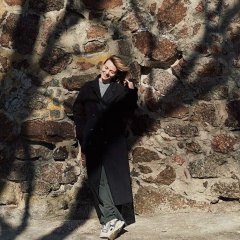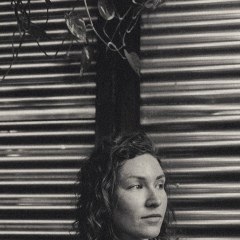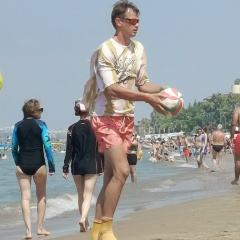ЭКСПЕРИМЕНТ: Искусственный рай для мышей (читай для людей).
____________________________________________
Учёный попытался создать рай на земле. Почитайте что из этого вышло... (ВСЕМ читать. Это ИНТЕРЕСНО!!!)
В 1968 году ученый-этолог Джон Кэлхун, на базе Американского национального института психического здоровья, поставил впечатляющий эксперимент. Кэлхун, провел аналогию социума мышей с человеческим обществом и на этом сходстве попытался предсказать будущее для всего человечества. Для этого ученый создалтак называемый «рай» для белых мышей. В лабораторных условиях, был выстроен квадратный загон 2х2 м. и высотой — 1,5 м., откуда подопытные не сумели бы выбраться. В конструкции поддерживалась благоприятная температура, присутствовали в изобилии корм и вода, постоянно пополнялись материалы для строительства гнезд. Грызуны находились под беспрерывным контролем ветеринаров, которые отслеживали состояние их здоровья. Были предприняты все необходимые меры безопасности: исключалось присутствие хищников и распространение массовых инфекций. Загон очищали раз в неделю и поддерживали в постоянной чистоте. То есть, для мышей было создано идеальное жизнеобеспечивающее пространство. Ученый описывал свою конструкцию как «мышиную утопию», а свой эксперимент назвал «Вселенная-25». Загон был рассчитан на 3840 мышей, забежим наперед и отметим, что максимальная численность популяции во время опыта достигла уровня 2200 особей и после только сокращалась.
Когда для эксперимента было все подготовленно в мышиный рай запустили 4 пары грызунов. С этого момента отсчитывается стадия А — период освоения. Через 55 дней мышиные семьи начали давать потомство. С момента появления первых детенышей началась фаза — В. Каждые следующие 55 дней, численность грызунов удваивалась. Уже через 315 дней скорость размножения уменьшилась, теперь количество популяции умножалась в двое каждые 145 дней — фаза С. На этом этапе в загоне стало гораздо меньше места, а количество мышей перевалило за 600 штук. У них успела сформироваться своя иерархия и определенная социальная жизнь.
1) Появилась каста «отверженных», что состояла в основном из молодых особей, они были загнаны в центр бака и постоянно становились жертвами агрессии. Вызвано это было тем, что в идеальных условиях загона мыши долго жили и стареющие поколения не освобождали места в социальной нише для молодых особей. Именно поэтому, агрессия была направлена в основном на молодых грызунов. Узнать их можно было по искусанным хвостам и выдранной шерсти. После изгнания самцы, ломались психологически и не желали защищать своих беременных самок.
2) Самки стали более агрессивными, поскольку им самим приходилось защищать свое потомство. Позже, их агрессия перекинулась и на детенышей, которых они убивали и перебирались в верхние гнезда, становясь отшельниками и отказываясь от размножения.
В результате рождаемость упала, а смертность молодняка достигла высоких результатов. В фазу вступила стадия D — смерть мышиного рая. На этой стадии появилась новая категория мышей — «красивые».
3) «Красивыми» — назвали мышей, что проявляли не характерное для своего вида поведение. Они не вступали в борьбу за самку и территорию, не проявляли желания к размножению. Они только ели, пили, спали и чистили свою шерстку.
В последствии «красивые» и самки-отшельницы, стали большинством. Средняя продолжительность жизни мышей составила 776 дней, что на 200-ти дней превысило границу репродуктивного возраста. Количество беременностей в последней фазе «мышиного рая» равнялась нулю. Девиантное поведение спровоцировала у мышей гомосексуализм. Также в мышином социуме, не смотря на изобилие пищи процветал каннибализм. Популяция вымирала и на 1780 день опыта умер последний обитатель «мышиного рая». Мышиный социум самоуничтожился. Рай превратился в ад.
Эксперимент назвали «Вселенная-25», потому что это была 25 (последняя) попытка создать мышиный рай, результат которой был как все предыдущие.
Таким вот образом, на примере мышиного социума, ученому удалось отследить поведения «общества» в условиях сытой беспроблемной жизни. Выявить прямую связь с людьми не составит труда. Вот вам пример люмпенов, матерей-одиночек, насилия в семье, беспричинной агрессии, обленившихся граждан, содомии и социального выж
____________________________________________
Учёный попытался создать рай на земле. Почитайте что из этого вышло... (ВСЕМ читать. Это ИНТЕРЕСНО!!!)
В 1968 году ученый-этолог Джон Кэлхун, на базе Американского национального института психического здоровья, поставил впечатляющий эксперимент. Кэлхун, провел аналогию социума мышей с человеческим обществом и на этом сходстве попытался предсказать будущее для всего человечества. Для этого ученый создалтак называемый «рай» для белых мышей. В лабораторных условиях, был выстроен квадратный загон 2х2 м. и высотой — 1,5 м., откуда подопытные не сумели бы выбраться. В конструкции поддерживалась благоприятная температура, присутствовали в изобилии корм и вода, постоянно пополнялись материалы для строительства гнезд. Грызуны находились под беспрерывным контролем ветеринаров, которые отслеживали состояние их здоровья. Были предприняты все необходимые меры безопасности: исключалось присутствие хищников и распространение массовых инфекций. Загон очищали раз в неделю и поддерживали в постоянной чистоте. То есть, для мышей было создано идеальное жизнеобеспечивающее пространство. Ученый описывал свою конструкцию как «мышиную утопию», а свой эксперимент назвал «Вселенная-25». Загон был рассчитан на 3840 мышей, забежим наперед и отметим, что максимальная численность популяции во время опыта достигла уровня 2200 особей и после только сокращалась.
Когда для эксперимента было все подготовленно в мышиный рай запустили 4 пары грызунов. С этого момента отсчитывается стадия А — период освоения. Через 55 дней мышиные семьи начали давать потомство. С момента появления первых детенышей началась фаза — В. Каждые следующие 55 дней, численность грызунов удваивалась. Уже через 315 дней скорость размножения уменьшилась, теперь количество популяции умножалась в двое каждые 145 дней — фаза С. На этом этапе в загоне стало гораздо меньше места, а количество мышей перевалило за 600 штук. У них успела сформироваться своя иерархия и определенная социальная жизнь.
1) Появилась каста «отверженных», что состояла в основном из молодых особей, они были загнаны в центр бака и постоянно становились жертвами агрессии. Вызвано это было тем, что в идеальных условиях загона мыши долго жили и стареющие поколения не освобождали места в социальной нише для молодых особей. Именно поэтому, агрессия была направлена в основном на молодых грызунов. Узнать их можно было по искусанным хвостам и выдранной шерсти. После изгнания самцы, ломались психологически и не желали защищать своих беременных самок.
2) Самки стали более агрессивными, поскольку им самим приходилось защищать свое потомство. Позже, их агрессия перекинулась и на детенышей, которых они убивали и перебирались в верхние гнезда, становясь отшельниками и отказываясь от размножения.
В результате рождаемость упала, а смертность молодняка достигла высоких результатов. В фазу вступила стадия D — смерть мышиного рая. На этой стадии появилась новая категория мышей — «красивые».
3) «Красивыми» — назвали мышей, что проявляли не характерное для своего вида поведение. Они не вступали в борьбу за самку и территорию, не проявляли желания к размножению. Они только ели, пили, спали и чистили свою шерстку.
В последствии «красивые» и самки-отшельницы, стали большинством. Средняя продолжительность жизни мышей составила 776 дней, что на 200-ти дней превысило границу репродуктивного возраста. Количество беременностей в последней фазе «мышиного рая» равнялась нулю. Девиантное поведение спровоцировала у мышей гомосексуализм. Также в мышином социуме, не смотря на изобилие пищи процветал каннибализм. Популяция вымирала и на 1780 день опыта умер последний обитатель «мышиного рая». Мышиный социум самоуничтожился. Рай превратился в ад.
Эксперимент назвали «Вселенная-25», потому что это была 25 (последняя) попытка создать мышиный рай, результат которой был как все предыдущие.
Таким вот образом, на примере мышиного социума, ученому удалось отследить поведения «общества» в условиях сытой беспроблемной жизни. Выявить прямую связь с людьми не составит труда. Вот вам пример люмпенов, матерей-одиночек, насилия в семье, беспричинной агрессии, обленившихся граждан, содомии и социального выж
EXPERIMENT: Artificial paradise for mice (read for humans).
____________________________________________
The scientist tried to create heaven on earth. Read what came of it ... (read ALL. This is INTERESTING !!!)
In 1968, ethologist John Calhoun, based at the American National Institute of Mental Health, set up an impressive experiment. Calhoun, drew an analogy between the society of mice and human society and tried to predict the future for all mankind on this similarity. For this, the scientist created the so-called "paradise" for white mice. In laboratory conditions, a square paddock of 2x2 m and a height of 1.5 m was built, from which the test subjects would not have been able to get out. A favorable temperature was maintained in the structure, food and water were abundant, materials for building nests were constantly replenished. The rodents were constantly monitored by veterinarians who monitored their health. All necessary safety measures were taken: the presence of predators and the spread of massive infections were excluded. The pen was cleaned once a week and kept clean at all times. That is, an ideal life-supporting space was created for mice. The scientist described his design as a "mouse utopia" and called his experiment "Universe-25". The paddock was designed for 3840 mice, let's run ahead and note that the maximum population size during the experiment reached the level of 2200 individuals and then only decreased.
When everything was prepared for the experiment, 4 pairs of rodents were launched into mouse paradise. From this moment, stage A is counted - the period of development. After 55 days, the mouse colonies began to produce offspring. From the moment the first calves appeared, phase - B began. Every next 55 days, the number of rodents doubled. After 315 days, the reproduction rate decreased, now the number of the population multiplied by two every 145 days - phase C. At this stage, there was much less space in the pen, and the number of mice exceeded 600 pieces. They managed to form their own hierarchy and a certain social life.
1) A caste of "outcasts" appeared, which consisted mainly of young individuals, they were driven into the center of the tank and constantly became victims of aggression. This was due to the fact that in ideal corral conditions, mice lived for a long time and the aging generations did not make room in the social niche for young individuals. That is why, aggression was directed mainly at young rodents. They could be recognized by their bitten tails and torn hair. After the expulsion, the males broke down psychologically and did not want to protect their pregnant females.
2) Females became more aggressive, because they themselves had to protect their offspring. Later, their aggression spread to the cubs, which they killed and moved to the upper nests, becoming hermits and refusing to reproduce.
As a result, the birth rate fell, and the mortality rate of young animals reached high results. Stage D entered the phase - the death of the mouse paradise. At this stage, a new category of mice appeared - "beautiful".
3) "Beautiful" - they called mice that showed behavior that was not typical for their species. They did not fight for the female and the territory, did not show any desire to reproduce. They only ate, drank, slept and cleaned their fur.
Subsequently, the "beautiful" and hermit females became the majority. The average lifespan of mice was 776 days, which exceeded the reproductive age limit by 200 days. The number of pregnancies in the last phase of "mouse paradise" was zero. Deviant behavior provoked homosexuality in mice. Also, cannibalism flourished in the mouse society, despite the abundance of food. The population died out and on the 1780th day of the experiment, the last inhabitant of the "mouse paradise" died. The mouse society has self-destructed. Heaven has turned into hell.
The experiment was named "Universe 25" because it was the 25th (last) attempt to create a mouse paradise, the result of which was like all the previous ones.
Thus, using the example of a mouse society, the scientist managed to track the behavior of "society" in a well-fed, problem-free life. Revealing a direct connection with people is not difficult. Here's an example of lumpen mothers, single mothers, domestic violence, gratuitous aggression, lazy citizens, sodomy and social survival.
____________________________________________
The scientist tried to create heaven on earth. Read what came of it ... (read ALL. This is INTERESTING !!!)
In 1968, ethologist John Calhoun, based at the American National Institute of Mental Health, set up an impressive experiment. Calhoun, drew an analogy between the society of mice and human society and tried to predict the future for all mankind on this similarity. For this, the scientist created the so-called "paradise" for white mice. In laboratory conditions, a square paddock of 2x2 m and a height of 1.5 m was built, from which the test subjects would not have been able to get out. A favorable temperature was maintained in the structure, food and water were abundant, materials for building nests were constantly replenished. The rodents were constantly monitored by veterinarians who monitored their health. All necessary safety measures were taken: the presence of predators and the spread of massive infections were excluded. The pen was cleaned once a week and kept clean at all times. That is, an ideal life-supporting space was created for mice. The scientist described his design as a "mouse utopia" and called his experiment "Universe-25". The paddock was designed for 3840 mice, let's run ahead and note that the maximum population size during the experiment reached the level of 2200 individuals and then only decreased.
When everything was prepared for the experiment, 4 pairs of rodents were launched into mouse paradise. From this moment, stage A is counted - the period of development. After 55 days, the mouse colonies began to produce offspring. From the moment the first calves appeared, phase - B began. Every next 55 days, the number of rodents doubled. After 315 days, the reproduction rate decreased, now the number of the population multiplied by two every 145 days - phase C. At this stage, there was much less space in the pen, and the number of mice exceeded 600 pieces. They managed to form their own hierarchy and a certain social life.
1) A caste of "outcasts" appeared, which consisted mainly of young individuals, they were driven into the center of the tank and constantly became victims of aggression. This was due to the fact that in ideal corral conditions, mice lived for a long time and the aging generations did not make room in the social niche for young individuals. That is why, aggression was directed mainly at young rodents. They could be recognized by their bitten tails and torn hair. After the expulsion, the males broke down psychologically and did not want to protect their pregnant females.
2) Females became more aggressive, because they themselves had to protect their offspring. Later, their aggression spread to the cubs, which they killed and moved to the upper nests, becoming hermits and refusing to reproduce.
As a result, the birth rate fell, and the mortality rate of young animals reached high results. Stage D entered the phase - the death of the mouse paradise. At this stage, a new category of mice appeared - "beautiful".
3) "Beautiful" - they called mice that showed behavior that was not typical for their species. They did not fight for the female and the territory, did not show any desire to reproduce. They only ate, drank, slept and cleaned their fur.
Subsequently, the "beautiful" and hermit females became the majority. The average lifespan of mice was 776 days, which exceeded the reproductive age limit by 200 days. The number of pregnancies in the last phase of "mouse paradise" was zero. Deviant behavior provoked homosexuality in mice. Also, cannibalism flourished in the mouse society, despite the abundance of food. The population died out and on the 1780th day of the experiment, the last inhabitant of the "mouse paradise" died. The mouse society has self-destructed. Heaven has turned into hell.
The experiment was named "Universe 25" because it was the 25th (last) attempt to create a mouse paradise, the result of which was like all the previous ones.
Thus, using the example of a mouse society, the scientist managed to track the behavior of "society" in a well-fed, problem-free life. Revealing a direct connection with people is not difficult. Here's an example of lumpen mothers, single mothers, domestic violence, gratuitous aggression, lazy citizens, sodomy and social survival.

У записи 15 лайков,
2 репостов.
2 репостов.
Эту запись оставил(а) на своей стене Андрей Лаврентьев

































